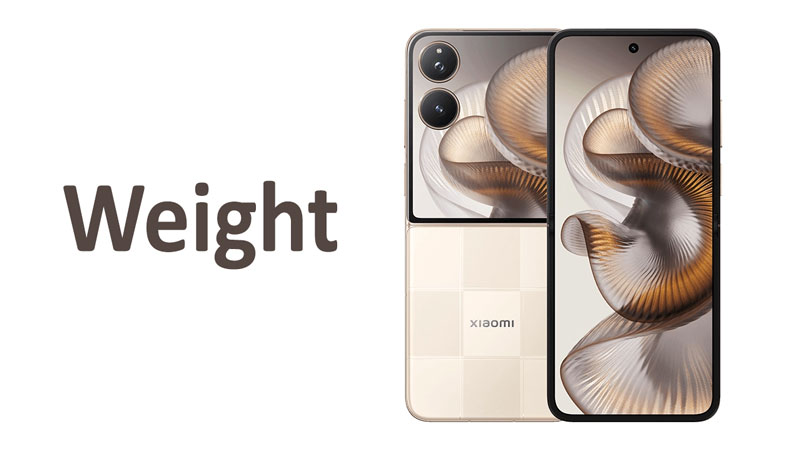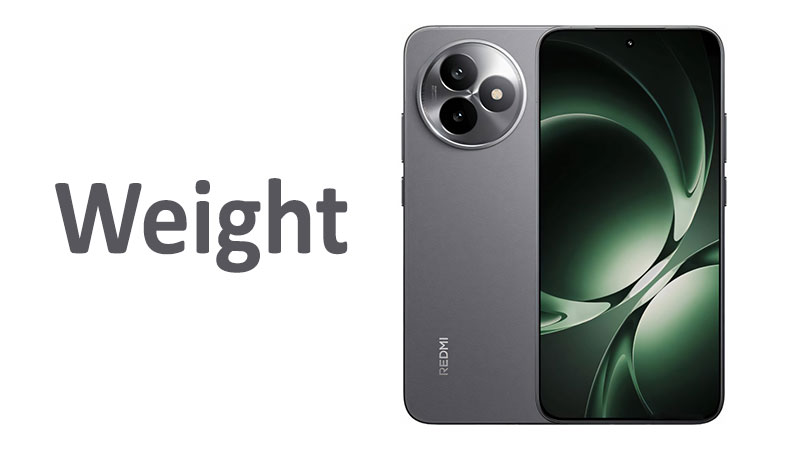The Lava Agni 4 weight marks a critical specification point for this generation of the mid-range smartphone. A device’s weight significantly impacts user comfort, portability, and the overall perception of build quality. The Lava Agi 4 weighs in at 208 grams (g). This mass translates to 7.34 ounces (oz) in imperial measurements. This weight class places the Agni 4 firmly in the substantial, yet manageable category. Understanding this single specification is vital for anyone considering a purchase. This article provides a deep dive into the engineering, comparisons, and daily implications of the Agni 4’s mass. We analyze how this specific weight profile affects everything from battery life to one-handed use. We focus on the factors that make the Agni 4 weight a competitive advantage.
Understanding the Lava Agni 4 Weight Profile
The specific dimensions and mass of any smartphone result from deliberate engineering choices. Lava engineers chose the 208g target for specific reasons related to durability and internal component housing. This chosen weight balances the desire for a premium, solid feel with the need for comfortable long-term use. This section breaks down the official weight and discusses its immediate impact on ergonomics. Consumers seeking portability often overlook the value of a certain heft.
Grams and Ounces Breakdown
The official Lava Agni 4 weight is exactly 208 grams. This figure represents the total mass of the device. It includes the chassis, the display assembly, the main circuit board, and the installed battery. This precise measurement helps buyers compare the Agni 4 directly against other models worldwide. Using the imperial system, the device weighs 7.34 ounces. This weight is consistent regardless of the phone’s color or storage configuration. A user easily perceives this mass when holding the phone for the first time. The 208g weight conveys an immediate sense of solid construction.
The 7.34 oz figure helps American consumers relate the phone’s weight to familiar objects. This measurement is crucial for accessory manufacturers. They must consider the combined weight of the phone and its protective case. The 208g weight acts as a baseline for all ergonomic calculations. This specific mass is not accidental. It contributes significantly to the device’s thermal management properties. A heavier device often dissipates heat more effectively than a lighter one.
Impact on Usability and Ergonomics
The 208g Lava Agni 4 weight immediately influences the device’s daily usability. Users often associate this level of heft with premium components and large batteries. The phone feels secure in the hand, reducing the likelihood of accidental drops. This perceived security is a significant psychological benefit for many buyers. The weight is distributed carefully across the phone’s body. This precise balance prevents the device from feeling top-heavy or bottom-heavy. Lava designers typically pay close attention to the center of gravity.
Extended use, such as long gaming sessions or video watching, presents the main ergonomic test. Users with smaller hands might experience some fatigue after 30 to 45 minutes of continuous one-handed operation. Two-handed use eliminates this issue. The weight provides excellent stability when typing or navigating menus. The phone resists slippage due to its mass. Overall, the 208g weight delivers a premium, robust experience suitable for most average-sized hands.
Comparative Analysis: Lava Agni 4 vs. Competitors
The true significance of the Lava Agni 4 weight becomes clear when we compare it to other smartphones. The mid-range market, where the Agni 4 competes, features a wide variety of weights. Some competitors prioritize lightness, while others lean toward battery capacity, which adds mass. The Agni 4’s specific weight profile offers a middle ground. It balances the benefits of a large battery with the requirement of comfortable pocketability. Lava positions the Agni 4 weight strategically to appeal to performance-focused users.
Comparing with Previous Agni Models
Comparing the Agni 4 to its predecessors reveals Lava’s evolving design philosophy. The Lava Agni 2, a key predecessor, weighed approximately 210g. The new Lava Agni 4 is marginally lighter at 208g. This 2-gram reduction suggests a few key engineering efforts. Lava managed to slightly reduce the overall mass while maintaining or potentially increasing the battery size. This optimization points toward the use of newer, lighter frame materials or more efficient internal layouts.
The slight decrease in Lava Agni 4 weight shows Lava did not chase extreme slimness or feather-light construction. Instead, they focused on maintaining the signature “solid” feel of the Agni series. This approach ensures existing Agni users feel familiarity with the device’s heft. It signifies that the company prioritized components like the battery and a robust cooling system over weight reduction alone. The Agni 4 offers a refined, slightly more balanced version of the established Agni weight characteristic.
Comparison with Mid-Range Rivals
When placed against its direct mid-range competitors, the 208g Lava Agni 4 weight is slightly above average. Many rivals target a weight between 185g and 195g for mass-market appeal. These lighter models often achieve their reduced mass by using smaller batteries or entirely plastic builds. The Agni 4 sacrifices a minimal amount of lightness for superior features. It aligns with devices prioritizing battery life and enhanced thermal performance.
For instance, devices with 5,000 mAh batteries often weigh between 200g and 220g. The Agni 4 sits perfectly within this higher-performance bracket. It confirms the likelihood of a substantial power cell within the device. Consumers must decide if the extra 10-20g is a worthy trade-off for all-day or multi-day battery life. The Agni 4’s mass positions it as a workhorse device. Its weight suggests it can handle demanding tasks without overheating or running out of power quickly.
The Engineering Behind the Weight
The final Lava Agni 4 weight of 208g is the sum of its internal parts. No single component is responsible for this mass. Instead, it is a complex equation involving the battery, the chassis, and specialized performance components. Understanding these internal contributions provides insight into the phone’s capabilities. A heavier phone is often a phone built for endurance and speed.
Battery Size and Density
The single largest contributing factor to the Lava Agni 4 weight is undoubtedly the battery. Given the 208g final mass, we can reliably infer the presence of a battery unit larger than 4,500 mAh. Lava likely equipped the Agni 4 with a high-density cell, potentially reaching 5,000 mAh. Lithium-ion and lithium-polymer batteries are heavy components. A 5,000 mAh cell easily accounts for 60 to 70 grams of the total weight.
The density of the battery material also plays a role. Advancements in battery technology allow manufacturers to pack more capacity into a slightly smaller volume. However, the raw mass of the power-generating chemicals remains substantial. The 208g weight confirms the Agni 4 focuses on long usage times. Users can expect exceptional battery longevity, which is a major selling point in the competitive mid-range sector. The weight is a clear indicator of power independence.
Chassis and Build Materials
The structural integrity and external feel of the Agni 4 come from its chassis materials. The 208g Lava Agni 4 weight points to a mixed material construction. Lava likely used a sturdy aluminum alloy for the internal frame and side rails. Metal framing adds crucial rigidity and weight. The back panel is a significant weight contributor. If Lava opted for glass on the back, the weight would increase compared to a lightweight polycarbonate plastic.
The Agni 4 likely uses premium curved glass on the display, mirroring modern design trends. Glass is notably heavier than plastic. This choice adds mass but delivers a far superior, durable, and tactile experience. The 208g mass is a direct consequence of using quality materials. It demonstrates a commitment to durability over simple weight reduction. The materials chosen help the phone withstand daily wear and tear.
Internal Components and Cooling
Performance components necessary for a powerful mid-range phone also contribute to the final 208g weight. The Agni 4 likely features a powerful processor requiring advanced thermal management. Vapor chambers and large graphite sheets are common solutions for cooling. These cooling systems effectively transfer heat away from the processor. They also add notable, non-trivial mass to the device’s internal structure.
A heavier phone sometimes indicates a larger camera module as well. High-quality camera lenses and sensors require more physical space. The optical image stabilization (OIS) mechanism, if included, also adds a few grams. The 208g Lava Agni 4 weight is a positive sign. It confirms Lava dedicated sufficient internal volume and mass to critical performance and imaging hardware. Users get high performance without aggressive thermal throttling.
Pros and Cons of the 208g Profile
The weight of the Lava Agni 4 is not simply a technical specification. It is a defining characteristic with tangible advantages and disadvantages for the end-user. The 208g profile generates a specific user experience. Buyers must consider how this weight fits their daily usage habits and lifestyle. The balancing act between durability and comfort is key.
Advantages of a Substantial Build
The 208g Lava Agni 4 weight offers several clear benefits. The most immediate advantage is the enhanced feeling of quality and expense. A heavier phone rarely feels cheap or flimsy. Users instantly perceive the Agni 4 as a durable, well-constructed device. The substantial mass acts as a deterrent against accidental drops. The phone is less likely to slip out of a pocket unnoticed.
Furthermore, the weight profile is excellent for media consumption and gaming. The phone rests securely in the hands during intense activities. It provides stability when pressing screen buttons or using virtual joysticks. The added mass also contributes to superior vibration feedback. The device’s linear motor can generate a powerful, tactile sensation that lightweight phones struggle to replicate. The 208g mass equals a superior, robust multimedia experience.
Potential Drawbacks for Daily Use
Despite the advantages, the 208g Lava Agni 4 weight presents a few potential drawbacks. The main concern is long-term comfort, particularly during extended usage periods. Holding the phone up to the ear for long calls can lead to mild arm fatigue. The mass also increases the strain on the wrist during prolonged scrolling sessions. Users who spend hours reading on their phones might prefer a lighter device.
Portability is another consideration. The Lava Agni 4 weight is noticeable in lighter clothing, like shirt pockets. It might cause thin fabric to sag or strain. The overall size, combined with the 208g mass, means the phone requires secure storage. Users accustomed to ultra-light flagships (often under 190g) may find the Agni 4 heavy by comparison. This is a trade-off for the phone’s powerful performance features.
Essential Buyer’s Guide: What Readers Must Know
Potential buyers researching the Lava Agni 4 weight need practical advice. The specification of 208g is only part of the story. The total effective weight can change significantly based on accessories and individual habits. A few key considerations ensure a new user maximizes their investment and remains comfortable.
One-Handed Use Considerations
Users who frequently rely on one-handed operation should approach the 208g weight carefully. The phone’s dimensions, coupled with the mass, push the limits of comfortable one-handed reach. The risk of dropping the phone increases when users stretch their thumbs across the screen. We recommend adjusting settings to enable a dedicated one-handed mode. This feature shrinks the display content for easier reach.
The phone’s finish also matters here. A smooth glass back can make a 208g device slippery. If the Agni 4 has a matte or textured finish, the grip improves significantly. We advise using a finger loop or pop socket for users who prioritize single-handed efficiency. These simple accessories drastically reduce the perceived Lava Agni 4 weight and the risk of accidental drops. Plan for accessories if you rely on using your phone one-handed.
Case and Accessory Weight Addition
The 208g Lava Agni 4 weight is the naked device weight. Every user must factor in the weight of their preferred protective case. A thin, silicone skin typically adds 10 to 15 grams of mass. A rugged, military-grade protective case easily adds 30 to 50 grams. This means the total mass often lands between 218g and 258g when ready for use.
A total weight exceeding 250g fundamentally changes the device’s profile. It moves the Agni 4 firmly into the heavy-duty category. Buyers should consider lightweight cases to keep the total mass manageable. A slim case is usually a good compromise. It offers protection while minimally impacting the phone’s 208g weight characteristic. Always account for accessory weight when evaluating pocket comfort.
Perceived Quality and Durability
The Lava Agni 4 weight positively influences the perceived quality of the device. Consumers often equate mass with material density and superior engineering. The 208g figure suggests the use of solid-state components and a non-hollow chassis construction. This heft is a powerful indicator of long-term durability. It implies the phone can absorb minor impacts better than ultra-light rivals.
The mass directly correlates with confidence in the device’s longevity. Buyers feel reassured the phone did not cut corners by using flimsy plastic components. The weight profile aligns with devices built for demanding performance and extended battery life. For many users, the 208g weight is a psychological assurance of value. It signals a premium experience within the mid-range budget.
Conclusion: Making an Informed Decision
The Lava Agni 4 weight of 208g (7.34 oz) is a strategic engineering decision. It is not an accident. This weight profile places the device in the segment of high-performance smartphones built for endurance. The mass strongly suggests the presence of a powerful, long-lasting battery unit and a robust cooling system. It also confirms the use of durable, premium-feeling materials like glass and metal framing.
Buyers must understand this weight is a trade-off for a superior feature set. You accept a slightly heavier phone for significant gains in battery life and thermal performance. The Agni 4 sacrifices marginal lightness for uncompromising durability and high-end performance components. The 208g weight is a clear advantage for gamers and heavy users. It gives the Agni 4 a solid, premium feel that distinguishes it from lighter, more plastic-centric rivals. The decision is clear: choose the Agni 4 if you prioritize power and structural integrity.
Frequently Asked Questions (FAQ)
Is the Lava Agni 4 considered a heavy phone?
At 208g, the Lava Agni 4 is slightly above the average weight for mid-range phones. It sits in the substantial category. This mass reflects its large battery and robust construction.
Does the 208g weight affect battery life?
No, the weight does not hurt battery life. The 208g mass strongly suggests the phone houses a large, high-capacity battery unit, which dramatically increases its longevity.
How much heavier is the Agni 4 than its predecessor?
The Lava Agni 4 is marginally lighter than the Agni 2, which weighed 210g. The new model shows a slight optimization and reduction of 2 grams.
What is the Lava Agni 4 weight in ounces?
The official Lava Agni 4 weight is 7.34 ounces. This imperial measurement is helpful for users accustomed to non-metric units of mass.
What causes the Lava Agni 4 to weigh 208g?
The weight primarily results from the inclusion of a high-capacity battery cell and the use of premium, durable materials like glass and metal in the phone’s chassis structure.



